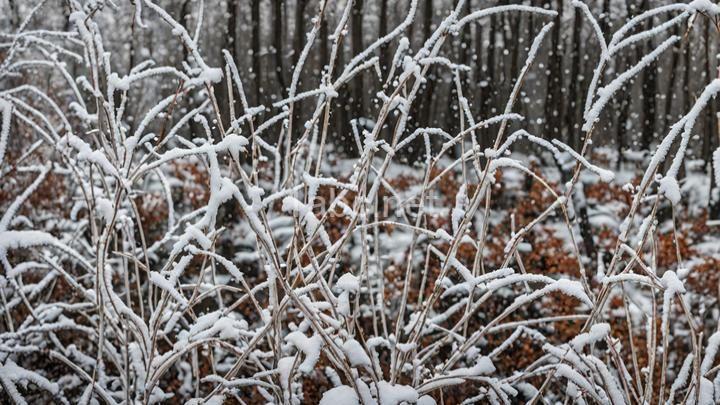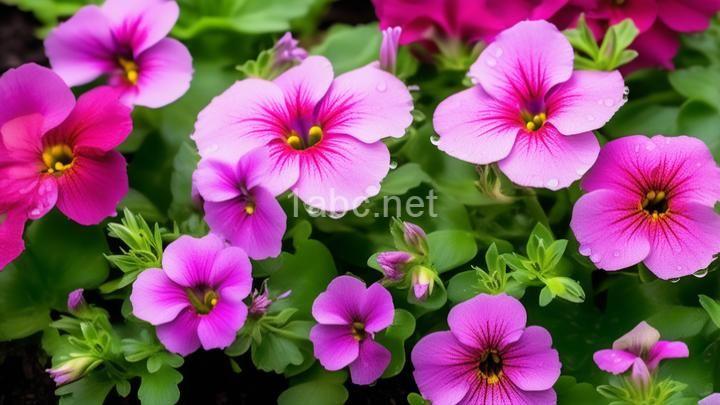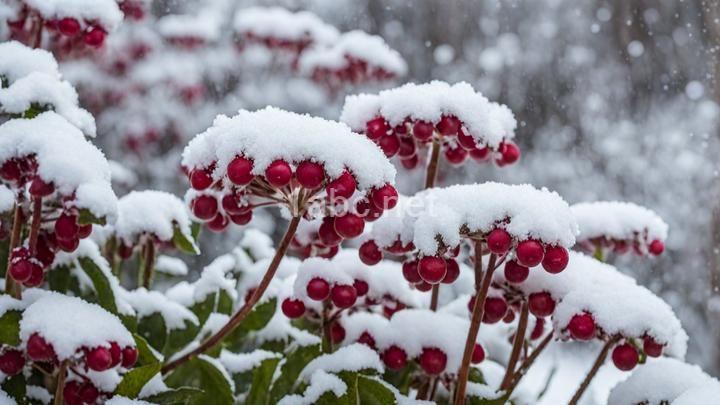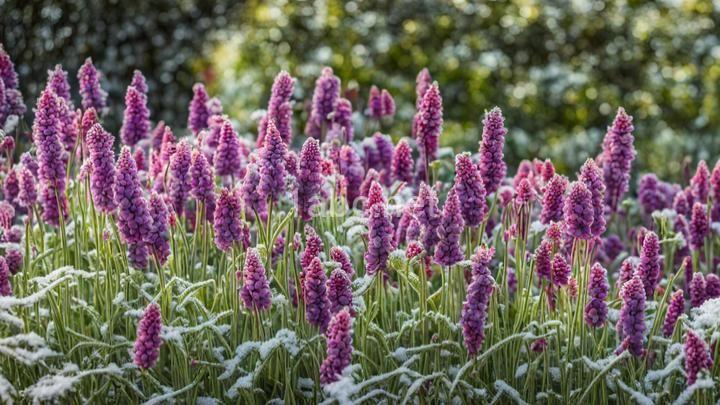Winter Wraps: Innovative Ways to Guard Your Garden Perennials

Introduction:
Hello, fellow garden enthusiasts! As winter approaches, it's essential to ensure the protection of our beloved garden perennials. These beautiful plants have brought us joy throughout the year, and now it's our responsibility to safeguard them during the harsh winter months. In this blog post, I am excited to share with you some innovative methods to help you protect your garden perennials and ensure their health and vibrancy come springtime.
I. Understanding Winter Risks:
Winter can pose numerous risks to our garden perennials. Frost, freezing temperatures, and snow accumulation can all cause damage and potentially kill our plants. It's crucial to be proactive and take preventative measures to avoid such outcomes. By doing so, we can ensure that our plants thrive and flourish when the warmer seasons arrive.
II. Choosing the Right Winter Wrap:
When it comes to protecting our garden perennials, choosing the right winter wrap is key. There are various options available in the market, such as burlap, frost blankets, and plastic covers. Each option has its benefits and drawbacks, and it's essential to consider factors like plant type, climate, and personal preferences when selecting a wrap.
Burlap is a versatile and widely used winter wrap. It provides protection from frost and freezing temperatures while allowing air circulation. However, it may not be suitable for extremely cold climates. Frost blankets are lightweight and easy to install, making them ideal for smaller plants. Plastic covers offer excellent protection from snow and freezing temperatures but may trap excess moisture if not properly ventilated.
III. DIY Winter Wrap Ideas:
Protecting your garden perennials doesn't have to break the bank. With a little creativity and resourcefulness, you can make your own winter wraps using recycled materials. One DIY idea is to create homemade burlap covers by repurposing old burlap sacks or coffee bags. These covers can be customized to fit your plants and provide the necessary protection. Another option is to use repurposed bed sheets as frost blankets. Simply drape them over your plants and secure them with stakes or rocks.
To make homemade burlap covers, you'll need the following materials:
- Burlap sacks or coffee bags
- Scissors
- Twine or zip ties
- Stakes or rocks for securing the covers
To create repurposed bed sheet frost blankets, gather: - Old bed sheets
- Stakes or rocks for anchoring
- Clothespins or binder clips for securing the sheets
IV. Additional Protective Measures:
In addition to winter wraps, there are several supplementary techniques you can employ to enhance plant protection during winter. Mulching around your plants can help insulate the roots and regulate soil temperature. Grouping potted perennials together creates a microclimate that provides added warmth. Using anti-desiccant sprays can protect plants from winter dehydration caused by dry winds. These measures, when combined with winter wraps, amplify the effectiveness of your protective efforts.
V. Maintenance Tips during Winter:
Proper maintenance of your winter wraps is crucial to ensure maximum protection for your garden perennials. Regularly check for any signs of damage or wear and make necessary repairs. Adjust or tighten wraps if they become loose due to strong winds or heavy snowfall. When removing excess snow accumulation, be careful not to cause harm to the plants. Consistent monitoring and maintenance are key to safeguarding your plants throughout the winter season.
VI. Preparing Perennials for Spring:
As winter begins to wind down, it's time to start preparing your perennials for the upcoming spring. Gradually remove the winter wraps once the threat of frost has passed, allowing your plants to acclimate to the changing environment. Prune any damaged foliage or branches to encourage healthy growth. Provide adequate water and nutrients to revitalize your plants after the winter dormancy period. Early spring care is essential for promoting vibrant blooming and overall plant health.
Conclusion:
Congratulations on taking the initiative to protect your garden perennials during winter! By implementing these innovative ways to guard your plants, you are ensuring their health and beauty for seasons to come. Remember to share your experiences in the comments section below and let us know how these methods worked for you. Together, we can create thriving gardens even in the harshest winters. Happy gardening!
FREQUENTLY ASKED QUESTIONS
What are Winter Wraps?
Winter wraps are typically warm and cozy accessories that are worn during the cold winter months. They are designed to provide extra warmth and protection from the harsh weather conditions. Winter wraps can come in various forms, such as scarves, shawls, or blankets. They are usually made from soft and insulating materials like wool, cashmere, or fleece, and are often available in a wide range of colors and patterns. Winter wraps are versatile and can be styled in different ways to complement various outfits, making them a popular choice for both fashion and functionality in colder climates.
How do Winter Wraps help protect garden perennials during winter?
Winter wraps, also known as plant wraps or protective covers, are used to help protect garden perennials during the winter months. They offer several benefits in terms of maintaining plant health and promoting survival. Here's how winter wraps help protect garden perennials:
- Insulation: Winter wraps provide an extra layer of insulation around the plants, which helps regulate temperature and prevent extreme fluctuations. This insulation helps prevent frost damage and keeps the plants warm during freezing temperatures.
- Wind protection: The covers act as a barrier against cold and drying winds that can damage the exposed foliage and stems of perennials. By blocking the wind, winter wraps help prevent desiccation and maintain the moisture content within the plants.
- Reduced exposure: Wrapping garden perennials minimizes their exposure to harsh weather conditions, such as snow, ice, and freezing rain. This reduced exposure helps prevent damage to the plant tissues and reduces the risk of breakage or splitting.
- Pest prevention: Winter wraps can act as a deterrent to pests and rodents that may be looking for shelter or food sources during the winter months. The covers create a physical barrier that makes it more difficult for pests to access the plants.
- Sun scorch protection: In some cases, winter wraps can also provide protection against sun scorch. In areas where winter sun exposure is intense, the covers can help shield the plants from excessive light, preventing sunburn and tissue damage.
It's important to note that not all plants require winter wraps. Hardy perennials typically have their own natural defenses and can withstand cold temperatures without significant damage. However, for more delicate or marginally hardy plants, winter wraps can be a valuable tool in ensuring their survival during harsh winter conditions.
Are Winter Wraps suitable for all types of garden perennials?
Winter wraps, also known as garden fleece or frost protection covers, can be beneficial for a wide range of garden perennials. They provide protection against frost and cold temperatures, helping to prevent damage to plants during the winter months.
However, it is important to note that not all garden perennials may require winter wraps. Some plants are naturally hardy and can withstand cold temperatures without any additional protection. On the other hand, certain delicate or tender perennials may benefit from the added insulation provided by winter wraps.
To determine if a specific perennial plant would benefit from winter wraps, it is recommended to consider factors such as the plant's hardiness zone, local climate conditions, and the plant's individual tolerance to cold. It is always a good idea to consult gardening references or seek advice from local experts to determine the best course of action for protecting your garden perennials during winter.
Can Winter Wraps be used in any climate?
Winter wraps are typically designed to provide warmth and protection during cold climates and winter seasons. They are typically made from heavier and insulating materials that help to keep the body warm in cold weather conditions. While winter wraps can be used in any climate, they may not be suitable for extremely hot or tropical climates where lighter clothing options are more appropriate. It's important to consider the temperature and weather conditions of your specific location before using a winter wrap.



